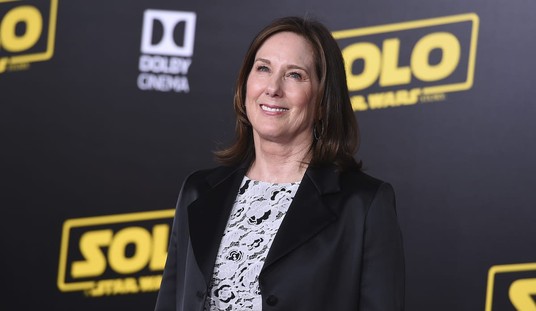While accepting her Oscar earlier this month actress Frances McDormand dropped the concept of an “inclusion rider” as a contractual way for Hollywood productions to increase “diversity” within casts and crews.
So, what is an inclusion rider, exactly?
Simply put: It’s a stipulation that actors and actresses can ask (or demand) to have inserted into their contracts, which would require a certain level of diversity among a film’s cast and crew.
For instance, an A-list actor negotiating to join a film could use the inclusion rider to insist that “tertiary speaking characters should match the gender distribution of the setting for the film, as long as it’s sensible for the plot,” Stacy L. Smith explained in a 2014 column that introduced the idea in The Hollywood Reporter.
A closer examination indicates that inclusion riders—like many ideas pushed by those who only measure intent rather than results—might do more harm than good.
What's an 'inclusion rider'? Frances McDormand explains backstage after her #Oscars speech pic.twitter.com/R3pAVbcYjl
— Variety (@Variety) March 5, 2018
It got people talking about this contract rider through which stars can demand a certain amount of diversity on projects they agree to do. McDormand said she had only heard about the concept the week before but for some reason felt qualified to declare that it was the solution to all of Hollywood’s discrimination problems. Rest assured that the only kinds of diversity they’re concerned with are gender and racial—probably sexual orientation or trans status too. There won’t be any contract language demanding that a certain percentage of cast and crew be people who represent thinking outside the rigid left wing orthodoxy of Hollywood.
An analysis by Eriq Gardner in The Hollywood Reporter explains how these contract add ons are hidden behind a veil of secrecy and the legalese is only shown to people on a need-to-know basis. You might think that people would have learned from the pervert and pedophile eruptions of the past year that secrecy is not a good policy. A lack of transparency combined with what looks a lot like an arbitrary quota system policed by prima donnas and their yes men sounds like a legal nightmare for anyone trying to make a movie.
And good luck hunting for inclusion-rider language. Evidently it’s top secret.
A colleague of Smith declined an invitation from THR to share the clauses they’ve drafted. “The language is for attorneys, actors and content creators — we don’t give it out,” said the colleague.
Or take recent word that Matt Damon and Ben Affleck would be adopting inclusion riders for projects made through their Pearl Street Films. After Fanshen Cox DiGiovanni, head of strategic outreach at the production company, announced the news, she was prodded by this reporter for specifics. “We have a backlog of requests and are currently prioritizing those who want to adopt the language for specific projects,” she wrote back. “If you have a project actively in development, we are happy to share the language.”
Does she really know? Who does?
For all the fuss that inclusion riders have generated, little attention has focused on how inclusion riders will operate in practice. Will there be hard minimums on the number of women and people of color to be hired? What about others who may be disadvantaged in the industry, such as older professionals and those with physical disabilities? Doesn’t employment law discourage looking at protected classes of people when hiring? What will be the penalties for failure to comply with diversity obligations? Does anyone beyond the contracting party have standing to sue? Will anyone actually want to rock the boat by doing so? And so forth…
Anyone familiar with the concept of unintended consequences probably hears an echo of Nancy Pelosi saying “we have to pass the bill so you can see what’s in it.”
Racial or gender quotas are terrible ideas generally. They’re great for increasing litigation and making lawyers wealthier but they don’t do anything to eliminate prejudice. If anything they increase it. Being known as the affirmative action hire is not a feather in one’s cap. It’s just another obstacle to overcome.
Instead of adding contract language, Hollywood perhaps should be considering subtraction — lifting the mechanisms of secrecy that have shielded predators and provided cover to those who may wear pink ribbons but who discriminate. As things are currently heading, these vague inclusion riders are in danger of becoming placebos for an industry feeling guilty as well as a faddish tool for Hollywood’s army of elite PR consultants. It costs absolutely nothing to embrace an inclusion rider. But without an accompanying guarantee of transparency, it’s also a quite meaningless commitment.
Who will be the first actor to shut down a movie and sue because the production didn’t meet it’s quota of Asian-American gaffers? Will they ever work again afterward? What happens when cast members have mutually exclusive riders?
“Inclusion riders” will likely become just another meaningless expression like hashtag campaigns or awareness ribbons.













Join the conversation as a VIP Member